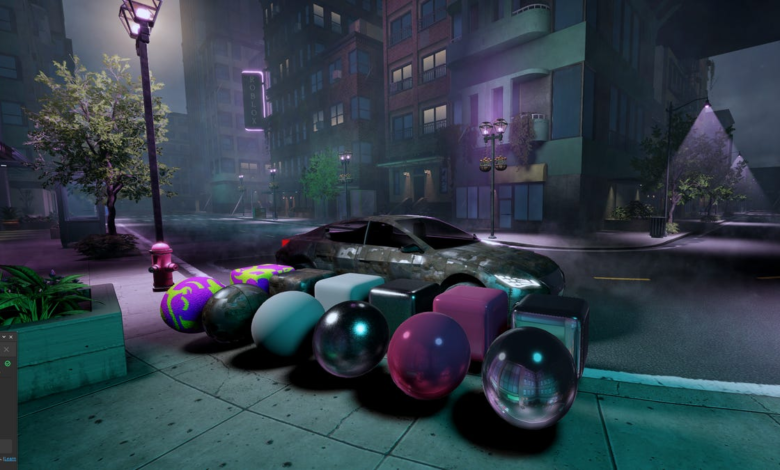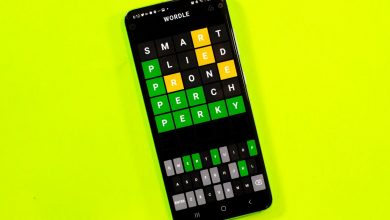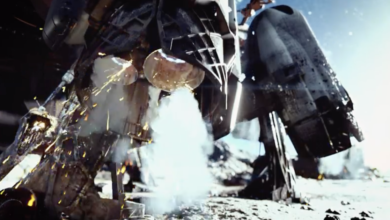Roblox and Its Generative AI: How Game Creation, and the Metaverse, May Be Changing

[ad_1]
The world’s biggest metaverse may, arguably, be Roblox. The platform my kids play almost daily is a continuous playground of increasingly evolving experiences with a vast marketplace. It’s also going to become a space where generative AI emerges. Roblox released two new AI tools in the past week, but both are only showing up in the creator-focused Roblox Studio: a coding tool that lets anyone use conversational AI to generate code on the fly; and a way to create material designs just by describing what you want.
I watched demos of the new Roblox tools in action, and they’re very much in line with what generative AI tools like Midjourney, Dall-E 2 and ChatGPT can already do, as Microsoft and Google have expanded these tools elsewhere. In the case of Roblox, however, these tools are focused on particular uses. Both of the tools are also, for the moment, separate from each other and trained differently.
Beyond conversational AI and rapidly evolving art tools, it’s the way AI is moving into being a copilot for coding that grabs me the most. I don’t know how to code, and I’ve often found game creation tools, even ones like Sony’s Dreams on PlayStation, to be intimidating. It looks very much like this emerging wave of AI is turning into a coding assistant… I’d hesitate to say complete coding tool, because it sounds like you’d very much want to see what errors and results come from whatever you think you’ve discussed into being. But much more so than in any other capacity, it looks like a way to quickly enable complicated creations.
Stefano Corazza, former vice president of Adobe’s Augmented Reality division and now head of Roblox Studio, says Roblox’s new AI features are targeted at “someone who is familiar with coding, and we just want to make them more productive.” But another initiative is coming for complete creative newcomers, too.
“We also have a parallel effort to help people that are completely new to coding,” Corazza says. “But if you are targeting people that are completely new to coding, we may need a different type of interface like ChatGPT that are a little bit more useful, because they explain to you what the code does, and then they write the code, and then they help you debug things. So I think we will have to think about an approach where the goal is learning, as opposed to writing a bunch of code.”
I’m curious about when these tools will emerge in the everyday Roblox app. There are already developers hooking in ChatGPT into Roblox now, but Roblox aims to eventually have some of these creative tools come outside of Studio.
“I think generative AI is really easier onboarding in the game development space overall, where people are less sophisticated in terms of, ‘Hey, I need something that gives me like, the Absolute Truth,’ right? It’s more of an iterative process,” Corazza says.
Is Roblox readying its platform to be able to more spontaneously generate worlds?
Someday, players may have these generative AI tools right inside Roblox. And along with that future possibility comes parental guidance concerns.
“In the future as this becomes a superpower of players, we will have to implement more real-time moderation. It also needs to be not only age appropriate, but also context appropriate. Things that you may say with your close group of friends may not be OK in a public setting, for example, or during a concert on Roblox. We are trying to develop a more contextual type of moderation because we think that will be a big deal in the future,” Corazza adds.
Coding and creation is the focus now, but what I see after that is how these quick AI assistants can generate environments on the fly for metaverse environments. The “build and someone will come” idea behind large social VR worlds like Meta’s Horizon Worlds and AltSpace VR haven’t worked. Will more instantaneous AI-driven invocations be a way to make future AR and VR feel like an instant holodeck?
“I think what we have seen is a transformation where a lot of the strictly technical skills will be picked up by AI, and then it will leave creators more high-level controls,” Corazza says. “We will enable a lot more people to just manifest their ideas in the metaverse.”
Corazza refers to Roblox’s own metaverse, and its hundreds of millions of users, as an example. “Until now, just the scale of content that was needed was not met,” Corazza says, referring to metaverse platforms. “Very few companies in the world could actually afford it. If we lower the barrier, and now everybody can generate a city by just saying ‘create the city of San Francisco, it’s sunset and it’s raining,’ and poof, you see the city in front of you, the cost of creation gets really low, then people can start doing really fun things and can experiment.”
Roblox isn’t actively in VR and AR yet, although Corazza says the company’s exploring many different types of platforms. But it’s pretty clear that these beginning steps for generative AI in 3D worlds are going to make a big impact on the metaverse, VR and AR soon enough.
“VR was always starving for content, right? It was like, a great game was made, and then it’s like, ‘OK, try to make an experience, you know, good luck.’ That has been a very difficult process. There was one inflection with user-generated content that was really powerful, and then the second inflection point, now that we are seeing with generative AI, is going to be another order of magnitude of how much content is available,” Corazza adds. “Even things like VR and AR will flourish, will really have like a second wave. Because now people can do stuff in those worlds and they can be much faster. I think that’s going to be a big game-changer.”
Editors’ note: CNET is using an AI engine to create some personal finance explainers that are edited and fact-checked by our editors. For more, see this post.
[ad_2]
Source link






